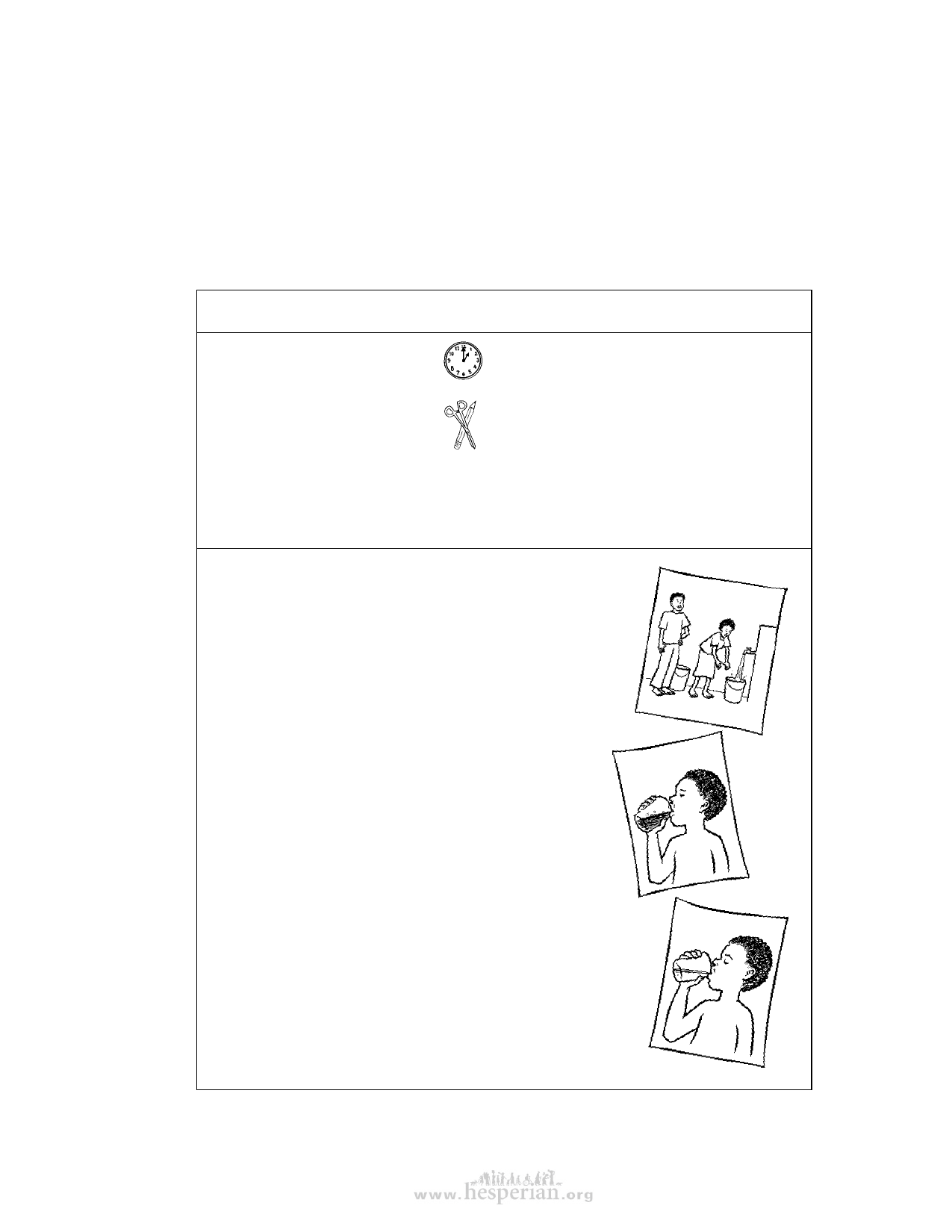
Water for Life 35
Safe water storage
Water is easily contaminated when it is collected, transported, and while it is stored.
To ensure that it is safe, water must be handled carefully while it is being carried and
it must be stored in vessels that protect it from further contamination. Water stored
in uncovered tanks or tanks with cracked walls, or loose or poorly made covers, is
easily contaminated by animal waste and germs. Planning and support of the whole
community are necessary to keep water safe for everyone.
Safe Water collection and storage
This activity helps
people think about how
water drawn from a
well, spring, or tap can
become contaminated
before it is consumed
at home. This activity
can be done with any
number of people.
Time: 1 hour
Materials: Sticky tape, three pictures
showing:
1. Two people collecting water at a well,
spring, or tap.
2. A child drinking a glass of muddy water
3. Another child drinking a glass of clear
water
Step 1: The facilitator shares the picture of the
people collecting water with the group. The group
discusses what is happening, talking about the
people as if they are from this community. What are
their names? How often do they collect water? Is the
water they are collecting safe? After the discussion,
the picture is taped to the wall.
Step 2: The group looks at the picture of the child
drinking muddy water. The facilitator explains
that this is the child of one of the people from the
first drawing, on the next day, drinking the water
that was collected. The picture is taped to the wall
below the first picture. The facilitator asks, “What
happened between yesterday and today to cause
the water to become contaminated?” The group
discusses all the possible ways the water could
have become contaminated.
Step 3: The facilitator shows the picture of the child
drinking clear water and tapes it to the wall below
the other pictures. She explains that this is the child
of the second water collector, and asks, “What has
this person done to keep the drinking water clean?”
The group then discusses the things that must be
done to keep drinking water uncontaminated and
how these things can be done in their community
and their homes.